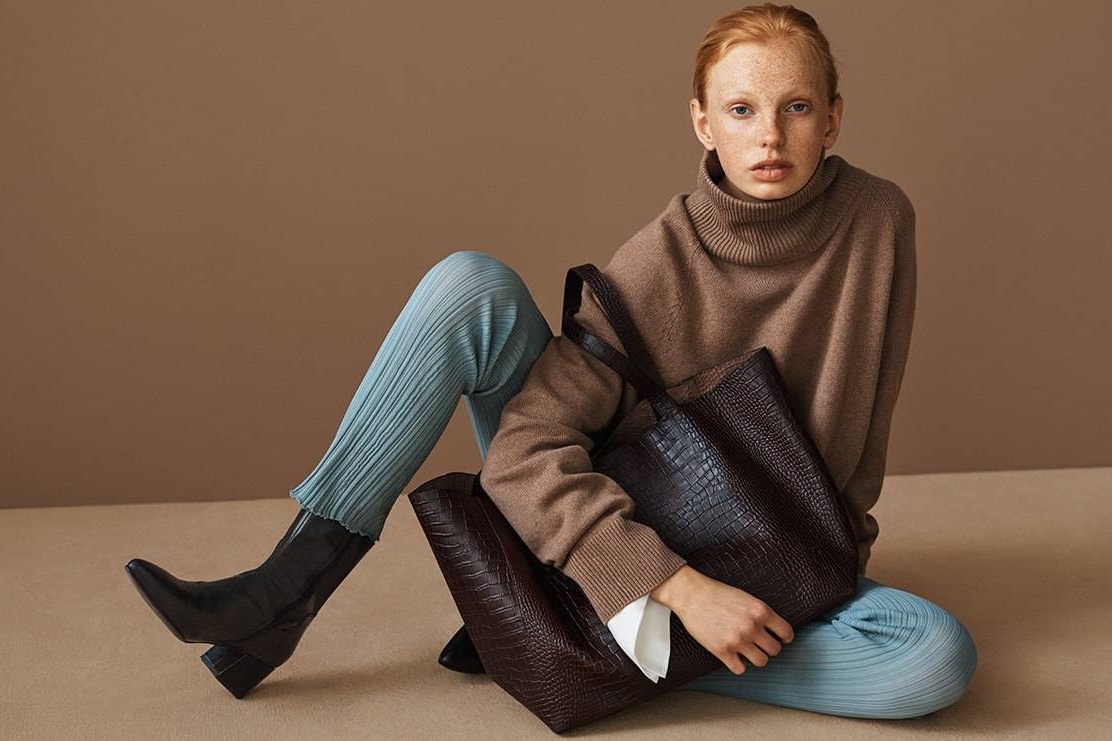

Vagabond Shoemakers
Following the release of its 2020 sustainability report, Swedish footwear manufacturer Vagabond Shoemakers is seeking to cut emissions moving ahead.
Following the pandemic, the brand stated that it worked on breaking down its value chain to better apply its sustainability efforts to each corporate function last year. This effort was done alongside a push to transition to more sustainable materials “component by component” as it tries to extend the product life cycle with initiatives like the Shoe Bring Back idea and a trial manufacturing of outsoles made from rubber recovered from old Vagabond shoes.
The footwear firm has pledged to decrease its emissions to the atmosphere by 50% before 2030 as a result of its review and will commit to calculating emissions as a major operational priority from 2021 onwards.
Because the brand’s online store has grown by 40% in the number of pairs sold, reducing emissions has become a priority. As a result of the rise in air shipments to end-consumers, emissions climbed from 7% to 24%. For the United States, Canada, and Russia, air shipments are employed, whereas European markets rely on land transit.
Head of corporate communications and sustainability coordinator, Anna Fahle Björcke, said that they evaluated their value chain in 2020 to identify critical areas, and as a consequence, they chose to prioritize lowering their air emissions. They also decided that from 2021 onwards, estimating emissions will be their primary operational emphasis, paving the way for the launch of their Green House Gas calculation program.
Other objectives identified in the brand’s study in 2019 and focused on in 2020 include materials, transparency, clean water, process chemicals, emissions to the air, the brand’s workspaces, and production working conditions.
Key sustainable strategies include reducing and replacing process chemicals that can be hazardous to the environment and/or human health in the production of materials, shoes, and accessories, as well as researching sustainable and circular materials, reducing overproduction, increasing product reuse/recycling opportunities, and developing more environmentally friendly shoe care and maintenance to extend the lifetime of shoes and accessories.
When it comes to materials and the circular economy, Vagabond Shoemakers says leather will remain the primary material of choice. Despite the fact that leather is a by-product of the meat industry, it is committed to sourcing only sustainably processed leathers.
Vagabond Shoemakers has also been a member of the Leather Working Group (LWG) since 2019, and by 2022, it has pledged to solely sourcing leather from LWG-rated tanneries, since the leather is manufactured in accordance with rigorous environmental criteria and the industry’s best current standard.
When it comes to leather replacements, Vagabond Shoemakers acknowledges that no full leather replacement material that fulfills the Vagabond quality criteria has been discovered. The brand adds in the report that this is a difficulty because long-lasting products are one of their major sustainability markers.
It has started a full-scale mapping of all of its materials in the manufacturing process to ensure less waste and less usage of reinforcing materials, such as avoiding material combinations that are more difficult to repair, separate, and reuse.
In 2020, LWG certified tanneries provided 43% of all leather materials, which is almost the same as in 2019. Due to a lack of material and the fact that the LWG audit program was delayed during the epidemic in 2020, Vagabond Shoemakers were unable to advance as rapidly as they had expected.
To avoid chrome allergies, all of its shoes with leather inside soles were produced with chrome-free tanned leather last year. While all textile linings and textile inner soles were manufactured from organic GOTS certified cotton, Tencel, or recycled polyester, the shoes’ inner textile soles and linings were made entirely from more sustainable materials.
Vagabond is also dedicated to decreasing the amount of waste it generates and finding new uses for shoes that are ready to be reused or recycled. It debuted its first small line of recycled post-consumer soles, ‘Vagabond Reborn,’ in the first half of 2020, featuring outsoles produced from a rubber-mix made up of 50% old used Vagabond shoes through the Shoe Bring Back initiative.
Overall, 2020 is characterized as the “next stage” in the footwear brand’s sustainability journey, and it has allowed the company to identify impact areas and measures that need to be taken, such as improving its list of prohibited compounds through internal chemistry training.
In its 2020 sustainability report, Vagabond Shoemakers added that the majority of these sustainability improvements have been agreed upon but not yet executed as a result of the epidemic. This year, we needed to prioritize sustaining their operations by prioritizing their employees’, clients’, and suppliers’ best interests. They know they’ll still be in pandemic mode in 2021, but they’ll have the skills to keep working toward sustainable improvements.
Kathmandu has launched Seeker range, an innovative and sustainable activewear collection that merges eco-friendly advancements with functional design.
The Global Organic Textile Standard (GOTS), managed by the non-profit organization Global Standard, has joined the Make the Label Count…
Packaging company Pact Group has partnered with textile recycling technology firm BlockTexx to develop a system for recycling discarded clothing…
Loftex USA is strengthening sustainability with the launch of eco-friendly towel sets, blending innovative performance features with luxurious designs.
Toray Industries, Inc. announced that starting this April, it will implement the mass balance approach in manufacturing its TORAYLON™ acrylic…
Cxffeeblack has joined forces with COMOCO Cotton, a sustainable textile company, to create a special coffee-dyed T-shirt made from unbleached…